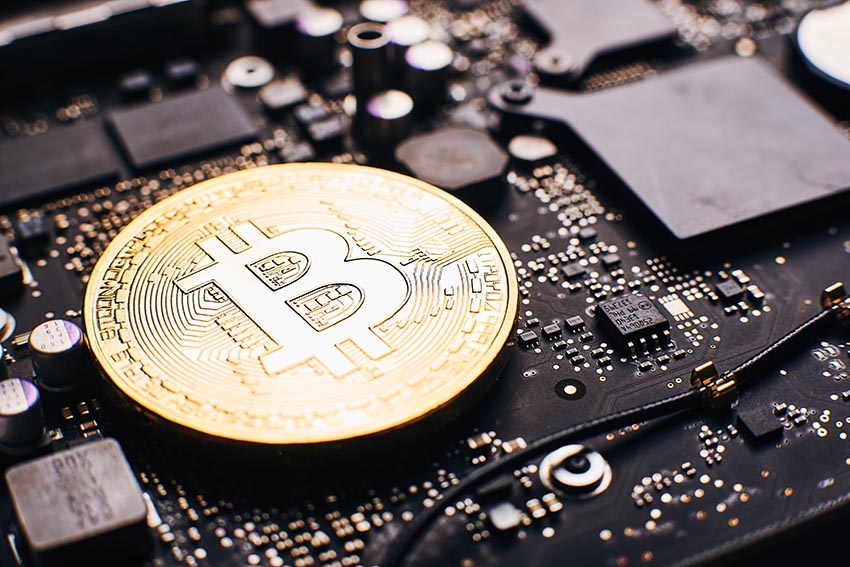Since the second half of 2018, the 7nm chips have been mass-produced under the continuous promotion of chip manufacturing processes such as TSMC and other global chip companies.
Almost in the same period, the bitcoin miner with 7nm chip was launched on the market which immediately attracted great attentions due to its improved performance.
The performance of previous generation of miner with 16nm chips seems to be slightly backward in comparison. When facing the challenge of 7nm miner, the 16nm miner will encounter new challenges due to the soaring difficulty of mining resulted from the cheap electricity in the upcoming flood season.
In such a situation, will the 16nm miner be rejected? Does the 7nm miner have absolute advantages? With the technological advancement, will 2019 become the key node for the upgrading of bitcoin miners? All should be seriously considered by all the mining workers.
“Prosperity” of 7nm Miner
Since the second half of 2018, the miner manufacturers, such as GMO Japan, Bitmain and Canaan, have successively launched 7nm miners. Mr. Chen Feng, the director of miner market of Canaan, even publicly declared that the company has already made preparation for research of 5nm chips.
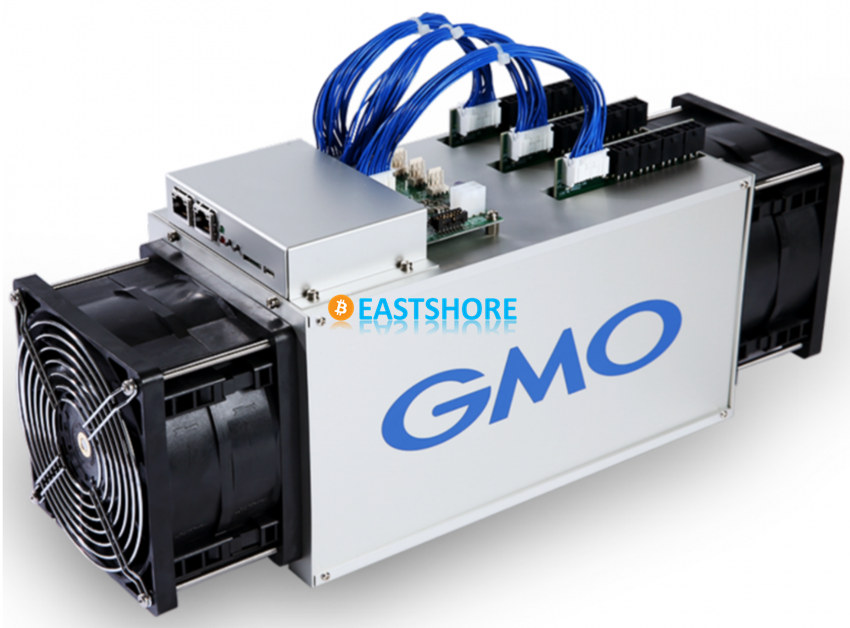
According to the data released by several manufacturers, the new generation of miners have been greatly optimized and improved in terms of performance and power consumption.
Taking the Antminer S15, the first generation of 7nm miner, as an example, the energy efficiency ratio is 57J/T, which is 50% lower than the 100J/T of Antminer S9. It means that Antminer S15 can save at least 50% of power when mining one bitcoin.
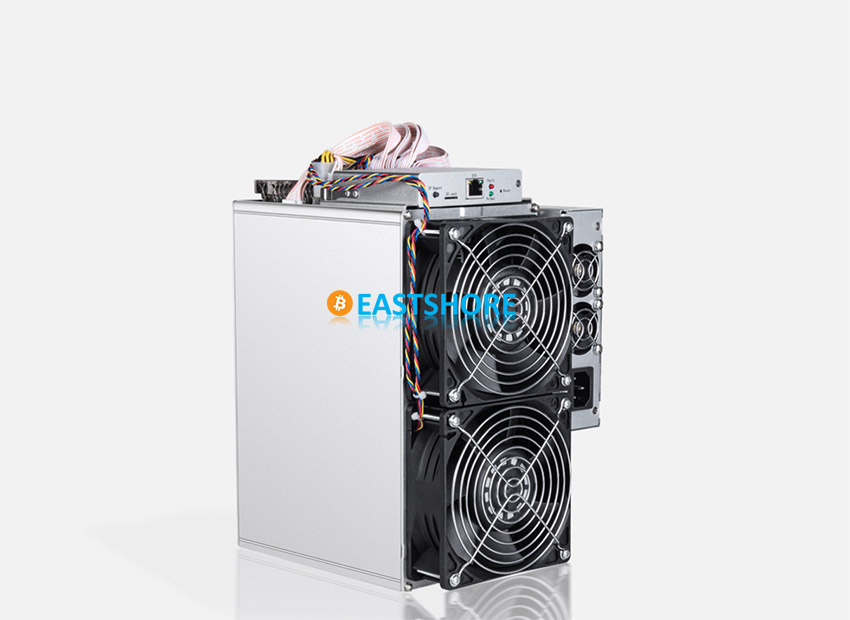
The energy efficiency ratio refers to the energy consumed to generate 1TH hashrate in unit time.
In the mining industry which “attaches great importance to power consumption”, such an efficiency improvement is of great significance.
Meanwhile, the 7nm miner itself is also being upgraded. In this respect, Bitmain has taken the lead in comparison with Canaan and GMO.
In this April, Bitmain launched Antminer S17, the second generation of 7nm miner. According to its official website, Antminer S17Pro is equipped with the second generation 7nm chip BM1397 and the hashrate in standard mode can reach up to 53TH/s with the energy efficiency ratio of 39.5 J/T, which can be as low as 36J/T in low power mode.
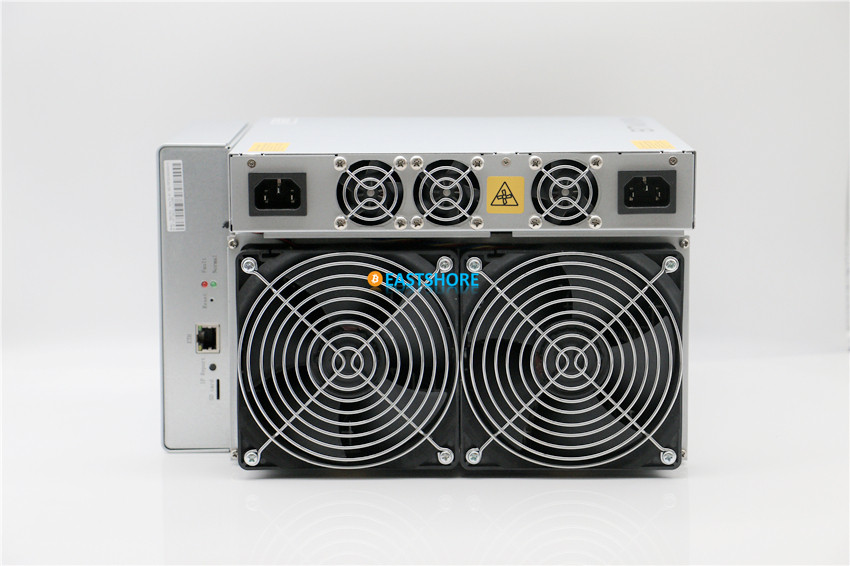
The power consumption of the second-generation chip is greatly reduced again.
According to information on the official website of Bitmain, Antminer S17 was sold out within 5 minutes once it was launched in April this year.
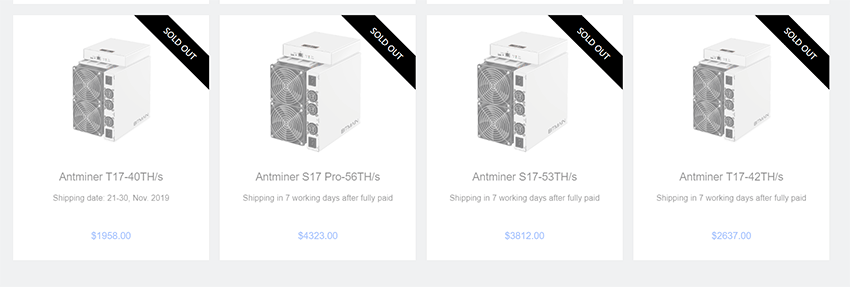
Many capable manufacturers have successively launched the latest model of miners and it seems that the 7nm miner is doomed to occupy the market.
Then, will these 7nm miners be greatly “favored” by the mining workers since they seem to have strong performance with great progress in energy efficiency ratio? Can they really help miner products upgrading to replace the previous generation of 16nm miners?
Will the 7nm miners really usher into the era of prosperity?
Can the 7nm miners be greatly “favored” by the mining workers?
“The only factor encouraging the mining workers to upgrade miners is the ROI. If the miner has high hashrate with low power consumption while the price is also affordable enough, they will certainly be willing to upgrade their miners.” Lin Hai said.
Lin Hai is an experienced bitcoin mining worker. At present, he deployed Antminer S9 on his mining farm. As for whether the miners should be upgraded in the mining circle, he has his own unique opinions.
“On the other hand, if new miners are expensive while the previous generation ones can still make profits, they would be unwilling to upgrade their machines.” Lin Hai told EastShore.
According to him, the new miners will not attract the mining workers unless they are affordable enough. Then, whether the 7nm miners are so-called affordable enough?
Firstly, let’s compare the profitability of the 7nm miner and the 16nm miner at current stage.
According to the latest data by F2pool, Antminer S9 is still profitable currently based on the integrated electricity bill of 0.45 yuan(0.06USD).
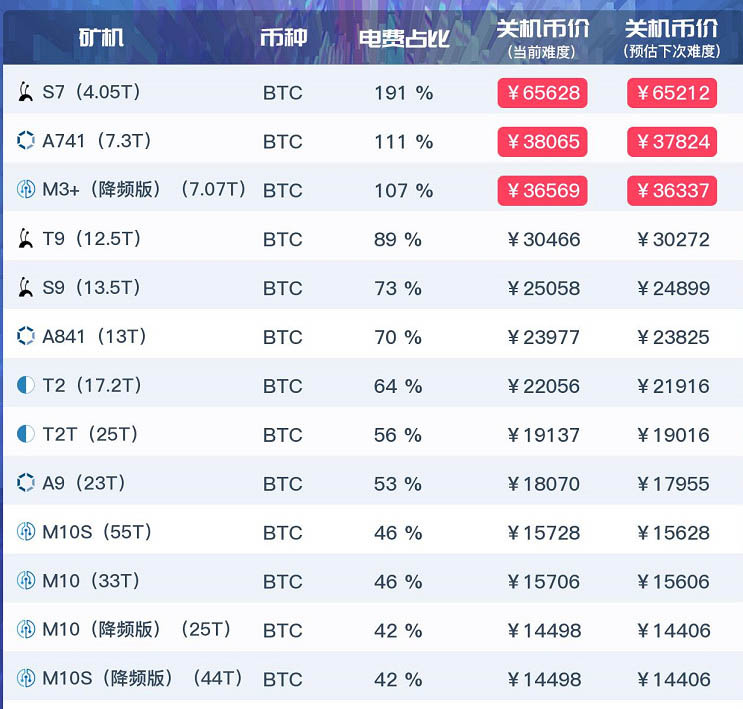
For Lin Hai, he has no incentive to replace the old miners if only in terms of profitability.
On the other hand, the price of 7nm miners will also completely make him “no illusions about the upgrading”.
“Antminer S17 is about 2800USD now. Under current mining conditions, the old miners are more advantageous.” Lin Hai said. “Now a second-hand Antminer S9 is only about 1,000 yuan(150USD) while the daily net profit can reach as much as 3 yuan(0.42USD). If the price keeps rising again, the profitability will be better at relatively stable mining difficulty. ”
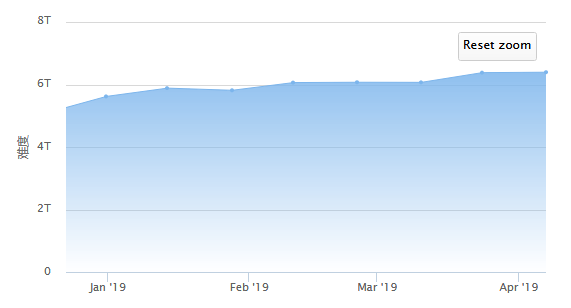
Although the mining difficulty increases by 14.1%, the price of bitcoin has also grown by more than 60%.
Then, is it possible for the new miners to be “favored” by the mining workers by cutting prices?
“Actually, the price of 7nm miners is difficult to be cut because the special chip costs a lot from design to application, then to the test and marketing. So, the cost recovery cannot be completed overnight.” Lin Hai told EastShore.
Although it’s hard to know the research and development costs of Antminer S17 and Avalon A9, since GMO has spent 10 billion yen on the design of 7nm miner (equivalent to USD 94 million), Bitmain and Canaan must have also spent billions of yuan on the development of their 7nm miners.
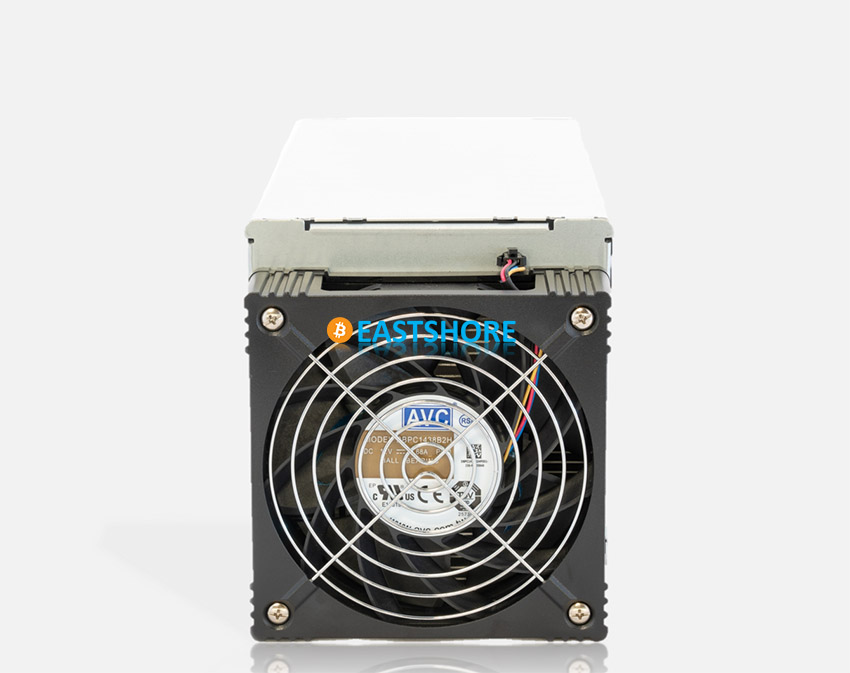
“When the mass production with big shipment volume has been realized and the costs of development will be easily recovered, the price reduction will also be a sure thing.” Lin Hai said.
Meanwhile, we have contacted the chiefs of marketing departments of one miner manufacturer. He also confirmed that the scheduled shipments of 7nm miners would not be as ideal as expected and they didn’t become the focus of their marketing strategy.
So, there’s still a long way for 7nm miners to go if they intend to be “favored” by the mining workers.
However, at present, the 16nm miners represented by Antminer S9 have dominated the mining circle. When facing the pressure of “new generation rivalry” from the 7nm miners as well as the soaring hashrate resulting from the upcoming low-cost hydropower in Sichuan province, China, will the 16nm miners cope with the challenges under the circumstances of increasing mining costs?
Generation Rivalry from 7nm Miners
“The 16nm miner itself is facing the generation rivalry now.” Lin Hai said.
The so-called generation rivalry refers to the energy efficiency competition of miner chips from different generations. For example, there is generation rivalry between 55nm miners and 16nm miners.
The chip process is developed step by step from 110 nm, 55 nm, 28 nm, 16 nm, 12 nm/10 nm till 7 nm.
Under normal circumstances, when there is generation rivalry, the more advanced miners can usually defeat the old ones completely to promote the upgrading of the entire mining industry.
Taking the 16nm miners as an example, when the type of miners represented by Antminer S9 came into being, the performance and price are superior to that of Antminer S1 equipped with 55nm chip. Under the same circumstances, the mining capacity of Antminer S9 is 22.5 times that of Antminer S1. In terms of the price, when it was launched in December 2013, the price was as high as 22,000 yuan. However, when Antminer S9 was launched in June 2016, the price was only 14,000 yuan.

According to the previous data, in terms of the energy efficiency as well as the prices, Antminer S9 is absolutely superior to Antminer S1 since they are products of different generations.
So, can such a kind of generation advantage still exist in terms of Antminer S9 and S17?
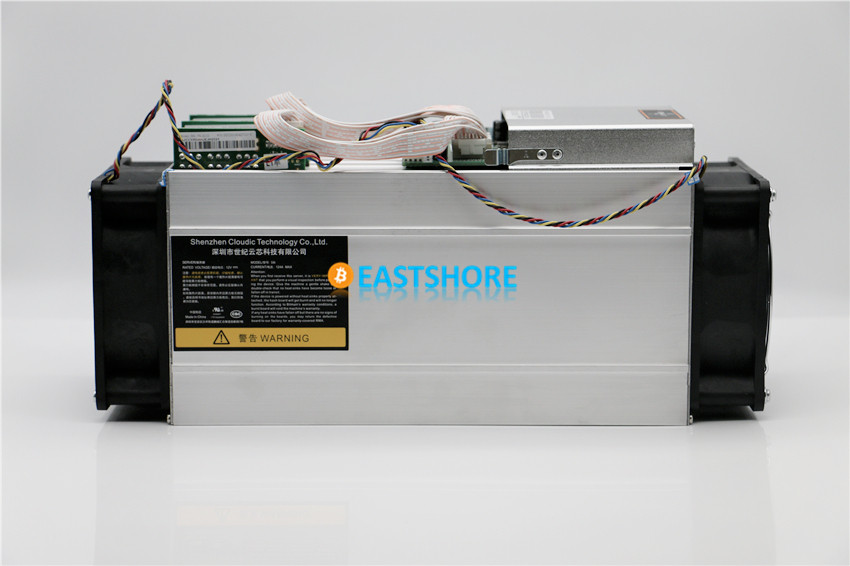
“At present, although Antminer S17 pro adopts the 7nm chip while Antminer S9 adopts the 16nm chip and they belong to different generations, there’s no obvious generation advantages yet.” Lin Hai said.
For example, the performance of 7nm Antminer S17 pro is the best of all Bitmain miners with 53T hash, 2520W power consumption and 47J/T energy efficiency ratio. In comparison, Antminer S9 enjoys the largest shipment in the market currently with 14T hashrate, 1350W power consumption and 97J/T energy efficiency ratio.
The energy efficiency ratio of Antminer S17 pro is only twice that of Antminer S9, whose gap is not as big as that between Antminer S9 and S1.
“Actually, if Antminer S9 is enabled with ASIC-BOOST overclocking(refer to: Install AsicBoost Firmware with Ultra-detailed Graphic Instructions), the energy efficiency ratio can be increased to 70J/T.” Lin Hai said, “Once the function is enabled, the performance of Antminer S9 will be further improved.”
According to some technical experts, that’s because semiconductors are still based on silicon, which leads to the chip process may have reached the dead end of Moore’s Law. Such a clue has already appeared when 14/16nm technology was newly introduced.
Moore’s Law was proposed by Gordon Moore, one of the founders of the Intel, which says that when the price remains stable, the number of components accommodated on the integrated circuit will be doubled every 18-24 months and the performance will be doubled. In other words, the computer performance which can be bought by every dollar will be more than doubled every 18-24 months. This law reveals the speed of information technology development.
Although this trend has been lasted for more than half a century, Moore’s Law is still regarded as an observation or speculation, instead of a physical or natural law. The law is expected to last till to 2015 or 2020. However, the updating growth of 2010 international semiconductor technology roadmap has been slowed down at the end of 2013, and the transistor density is expected to be doubled only every three years.
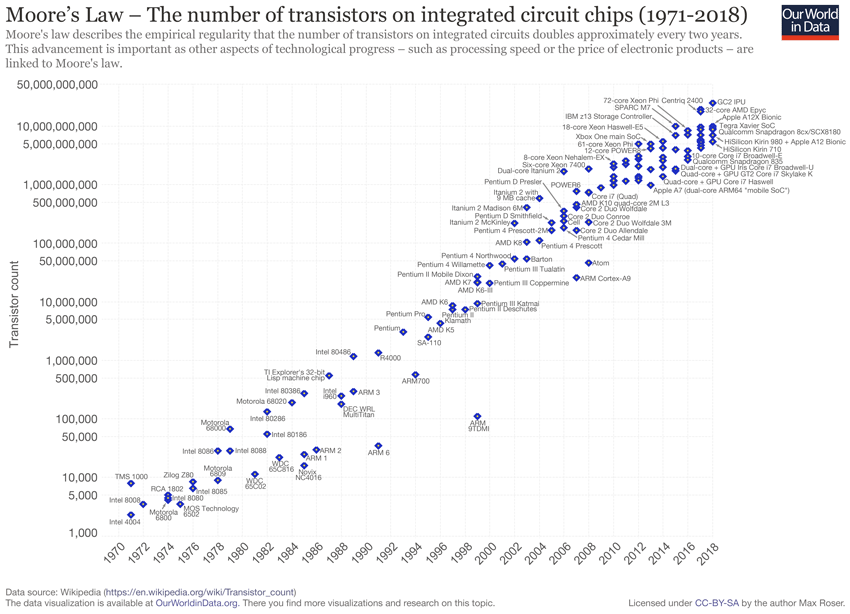
Moore’s law. Image credit: wikipedia.org
That is to say, with the development of chip nanotechnology, the products will not result in the same performance improvement as expected before.
At the same time, Jiang Zhuoer, the CEO of BTC.TOP, also held a similar viewpoint and he believed “the 16nm machines will become the sub-ultimate miners.”
From this perspective, Antminer S9 can cope with the generation rivalry.
In that case, why are so many manufacturers actively launching the 7nm miners and what’re their intentions? Market driven or just an arms race?
7nm miners, an arms race or market driven?
“The development of chip technology resulted from the advancement of manufacturing processes of chip companies such as TSMC, GLOBALFOUNDRIES, UMC and Samsung. The technological advancements have promoted the development of hardware devices.” Lin Hai said, “After the 7nm chip was produced, it was firstly applied to Apple. Huawei and other mobile phone manufacturers, and then it’s possible to applied in the miners.”
In other words, the 7nm miners produced by all the manufacturers should be based on the mature 7nm chip technology.
“The chip manufacturing process is far more complicated than the low threshold assembly products in Foxconn. It’s the work of high technicality.” Lin Hai told EastShore.
The significance of numbers such as 10nm and 7nm: The chip is composed of transistors distributed on the crystal silicon, and nm refers to the minimum space between two adjacent transistors. The smaller number, the more transistors can be included in the same volume with better performance.
“The miner upgrading is actually driven by technological advancement.” Lin Hai said, “It’s normal for miner manufacturers dream to occupy a place in the 7nm era.”
At the same time, since the overall hashrate of bitcoin keeps increasing with more mining difficulties while the price of bitcoin has never increased simultaneously, the mining industry is also expecting the miners with higher energy efficiency and more affordable prices to reduce mining costs.
Since the second half of 2018, the bitcoin prices have fallen by more than 50%. At the same time, the mining hash has also undergone tremendous changes. Many miners, such as Antminer S9 and Antminer T9, are almost shut down or just struggling to remain operational at a certain degree.

“In that big slump, Antminer S9 might have been terminated without overclocking.” Lin Hai said, “That is to say, although the mainstream miners such as Antminer S9 can still make profits with a big market share, it’s also the time for them to be updated.”
It seems that the new model of miner is not only the result of “arms race” among the miner manufacturers, but also the market demand.
Anyhow, there’s still a long way to go for the 7nm miners to successfully attract the attention of all the mining workers, take the place of Antminer S9 and be greatly favored in the market.
The process of miner upgrading can never be determined by certain single factor.
The process should result from the continuous improvements of chip technology, miner design technology as well as the capital market.

